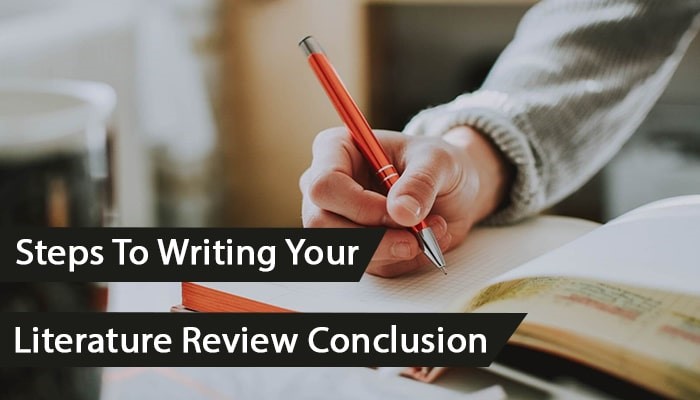Learn The Right Way To Conclude A Literature Review

The purpose of writing a literature review is to defend the purpose and impact of your research. A literature review should include in it the lacking of previous research conducted. It should also cover the loopholes present in the current theories and the gaps in your research.
You had expected not only to discuss the weakness and gaps in the research but also to talk about how these gaps can be filled and what can be done in this regard.
The way an introduction introduces the topic and focuses on the main points, moving from general discussion to specific, the conclusion of the literature review takes on an opposite approach. It starts with discussing the impact and consequences of the dissertation topic and then takes on a more general approach.
The first time you mentioned why you chose the subject, you can use that point and refer back to it in your conclusion.
According to Professor Mandy from dissertation writers UK, the conclusion consists of one paragraph only and does not introduce a new topic of discussion. To conclude a literature review, you restate your main objectives and shed light on the findings, thus emphasizing their importance.
Here we have put together some points to give an idea for the conclusion of the dissertation literature review
-
List Your Ideas
It often looks as if writing a conclusion is merely an easy task, but when you really sit down to write it, you will realize that it is not as easy as it looks. Remember the introduction and conclusion of your dissertation is the most important part and decides how the people receive your dissertation.
A conclusion must include the key factors and how you aim to contribute to the world of research. It is an analysis of what your objectives were and how far you have been able to fulfil them.
Before you right away start writing your conclusion, make sure to list the key points and the new findings that you have covered and have not done before that to let the reader know what makes your research different and unique in its kind.
-
Comment on Your Findings
After you have put together all your ideas and set your mind to what details you wish to include, you should comment on how you agree or disagree with them, along with the reasons.
While you give your counterarguments, make sure not to make it too long and try to be specific by sticking to the main idea.
Also, refer to what lapses you have encountered in the other research. It could be anything, a mention of wrong figures or a not-so-good manner of research.
-
Loopholes in the Already Existing Research
As you mention the key points in your research, move ahead by pointing out the problems and loopholes in the already existing research works and give a solution of what can be done in order to fix those issues.
Stating the problems along with its solution is a good way of giving a comprehensive idea and would give a lot of weightage to your point of view, Says Mr Kevin Bonnie an academic writer at do my assignment for me UK firm.
-
Room for Further Research
A brief idea is sometimes also stated in the conclusion, referring to plans and directions. Writers often give their recommendations for future findings and put forwards their idea of what should happen next.
After you have given a full analysis of your research work and other research works, you can move further by discussing what future research can take place. You can leave your research at a point, which will enable other researchers to come up with a new topic to work upon.
The writer can talk about how their work is built upon the existing works and what is still left to be explored.
-
Moving towards Conclusion
Your research should be well written in such a manner that as the conclusion approaches, your reader is well aware that the research is ending. The ideas must be placed in a way that is obvious on the part of the reader that the research is going towards a closure.
You should not have to use words like ‘In conclusion’ to let your readers know that the conclusion is approaching. Hence, the reader should have a direct sense of the ending without you having to tell them. Make sure not to leave any cliffhangers because it has a negative impact.
-
Avoid New Information
Bear in mind that your conclusion is only a restatement of what you have already discussed in your research. Introducing any new idea, in conclusion, is a big no!
You should give a review of the things you have discussed in the paper. The only new thing you could discuss in this conclusion could be regarding the suggestions for future research.
Below are some tips, which can be used to make your conclusion interesting and engaging, thus, leaving a lasting impact on the reader?
- Avoid writing unnecessary details because it does not give a good impression to the reader and extends your conclusion for no good reason.
- Make sure the conclusion is short and precise, as well as easy to grasp. Not anything new or complicated should be put here; hence, that would only boggle the reader’s mind.
- Mention all the key points and findings in your conclusion to give it a comprehensive touch.
- Mention all the factors in a way that they are well connected and easy to understand on the part of the reader.
- Make sure not to add anything that was not mentioned earlier in your research. Only talk and refer back to things you have already discussed.
These are some of the tips regarding how to conclude a literature review. The paper should discuss and display what kind of turnover, change, or solution it is expected to bring about.